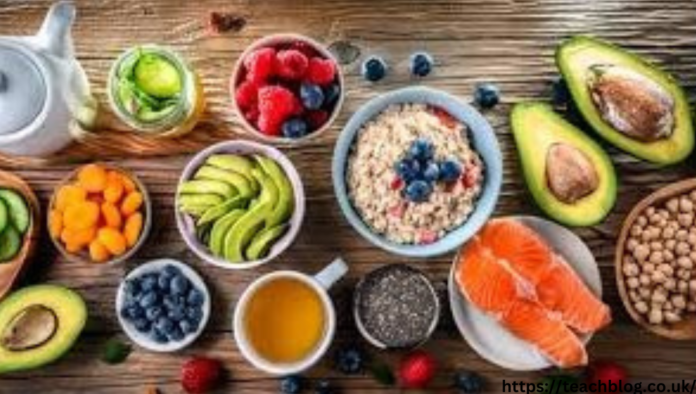Gastritis, an inflammation of the stomach lining, can be a challenging condition to manage. It often causes discomfort, pain, and digestive issues that can significantly impact daily life. However, with the right dietary approach, you can alleviate symptoms and promote healing. This article offers a comprehensive 7-day meal plan for gastritis, along with essential tips and tricks to help you navigate this condition. We’ll cover what gastritis is, the foods to avoid, the best foods to eat, and why consulting with a Registered Dietitian is crucial for managing gastritis effectively.
Table of Contents
What Is Gastritis?
Gastritis refers to the inflammation, irritation, or erosion of the stomach lining. It can occur suddenly (acute gastritis) or develop slowly over time (chronic gastritis). The condition can be caused by various factors, including prolonged use of nonsteroidal anti-inflammatory drugs (NSAIDs), excessive alcohol consumption, stress, and bacterial infections like Helicobacter pylori. Symptoms of gastritis may include abdominal pain, nausea, vomiting, bloating, and indigestion.
Foods to Avoid with Gastritis
Managing gastritis effectively often starts with understanding what foods to avoid. Certain foods can irritate the stomach lining, exacerbating inflammation and symptoms. Here’s a list of foods to steer clear of:
- Spicy Foods: Spices like chili peppers, black pepper, and hot sauces can irritate the stomach lining.
- Acidic Foods: Citrus fruits (oranges, lemons, limes), tomatoes, and vinegar-based foods can increase stomach acidity, worsening gastritis symptoms.
- Fried and Fatty Foods: Foods high in fat, such as fried items, full-fat dairy, and fatty meats, can slow down digestion and increase stomach discomfort.
- Caffeinated Beverages: Coffee, tea, and energy drinks can stimulate acid production, irritating the stomach.
- Alcohol: Alcohol can erode the stomach lining, leading to increased inflammation and irritation.
- Processed Foods: Foods high in preservatives, artificial flavors, and colors can be harsh on the digestive system.
- Carbonated Drinks: Sodas and sparkling water can cause bloating and discomfort, aggravating gastritis symptoms.
Best Foods to Eat with Gastritis
While there are many foods to avoid, there are also plenty of foods that can help soothe and heal the stomach lining. The key is to focus on easily digestible, low-acid, and anti-inflammatory foods. Here are some of the best options:
- Non-Acidic Fruits: Bananas, melons, applesauce, and pears are gentle on the stomach and provide essential nutrients.
- Vegetables: Cooked vegetables like carrots, broccoli, spinach, and zucchini are easy to digest and packed with vitamins.
- Whole Grains: Oats, brown rice, quinoa, and whole-grain bread offer fiber and support digestion.
- Lean Proteins: Skinless chicken, turkey, tofu, and fish are excellent protein sources that are gentle on the stomach.
- Low-Fat Dairy: Skim milk, yogurt, and low-fat cheese can be included in moderation.
- Ginger: Known for its anti-inflammatory properties, ginger can help reduce nausea and stomach irritation.
- Herbal Teas: Chamomile, peppermint, and ginger teas can soothe the stomach lining and promote digestion.
7-Day Meal Plan for Gastritis
This 7-day meal plan is designed to provide balanced nutrition while minimizing gastritis symptoms. Each day includes breakfast, lunch, dinner, and snacks that are easy on the stomach and promote healing.
Day 1:
- Breakfast: Oatmeal with sliced bananas and a drizzle of honey
- Snack: Applesauce
- Lunch: Grilled chicken breast with steamed carrots and brown rice
- Snack: A small handful of almonds
- Dinner: Baked salmon with steamed broccoli and quinoa
Day 2:
- Breakfast: Whole-grain toast with avocado and a poached egg
- Snack: A pear
- Lunch: Turkey and vegetable soup with whole-grain crackers
- Snack: A small yogurt with honey
- Dinner: Baked chicken with mashed sweet potatoes and sautéed spinach
Day 3:
- Breakfast: Smoothie with spinach, banana, and almond milk
- Snack: A handful of blueberries
- Lunch: Quinoa salad with grilled vegetables and a lemon-olive oil dressing
- Snack: Carrot sticks with hummus
- Dinner: Baked cod with roasted zucchini and brown rice
Day 4:
- Breakfast: Low-fat yogurt with sliced melon and a sprinkle of flaxseeds
- Snack: An apple
- Lunch: Grilled turkey and avocado wrap with whole-grain tortilla
- Snack: A small handful of walnuts
- Dinner: Stir-fried tofu with steamed broccoli and jasmine rice
Day 5:
- Breakfast: Cream of wheat with a sliced banana and a dash of cinnamon
- Snack: A small bowl of applesauce
- Lunch: Lentil soup with whole-grain bread
- Snack: A pear
- Dinner: Baked chicken with roasted sweet potatoes and sautéed green beans
Day 6:
- Breakfast: Scrambled eggs with spinach and a slice of whole-grain toast
- Snack: A small handful of almonds
- Lunch: Baked tilapia with steamed carrots and quinoa
- Snack: A small yogurt with honey
- Dinner: Grilled turkey breast with mashed cauliflower and sautéed spinach
Day 7:
- Breakfast: Smoothie with banana, ginger, and almond milk
- Snack: A handful of blueberries
- Lunch: Baked chicken breast with steamed zucchini and brown rice
- Snack: Carrot sticks with hummus
- Dinner: Grilled salmon with roasted Brussels sprouts and quinoa
Why We Recommend Working with a Registered Dietitian if You Have Gastritis
Managing 7-Day Meal Plan for Gastritis can be complex, as individual responses to foods vary widely. A Registered Dietitian (RD) can provide personalized guidance tailored to your specific needs. Here’s why working with an RD is beneficial:
- Customized Meal Plans: An RD can create a meal plan that considers your unique symptoms, food preferences, and nutritional needs.
- Nutritional Balance: They ensure your diet provides all the necessary nutrients while avoiding foods that trigger symptoms.
- Long-Term Management: An RD can help you develop sustainable eating habits that support long-term stomach health.
- Monitoring and Adjustments: They can track your progress and make necessary adjustments to your diet as your condition evolves.
How Season Can Help
Season, a digital health platform, offers personalized nutrition support for individuals with chronic conditions like gastritis. With Season, you can access customized meal plans, recipes, and expert guidance to help manage your 7-Day Meal Plan for Gastritis effectively. The platform connects you with Registered Dietitians who can tailor their advice to your needs, making it easier to stick to a gastritis-friendly diet.
Key Benefits of Using Season:
- Personalized Meal Plans: Get meal plans that align with your dietary restrictions and preferences.
- Expert Guidance: Work with Registered Dietitians who understand your condition and can provide targeted advice.
- Convenience: Access everything you need from your phone or computer, making it easy to manage your diet on the go.
Conclusion
Managing gastritis doesn’t have to be a daunting task. By understanding the foods to avoid and the best foods to eat, you can significantly reduce symptoms and promote healing. This 7-day meal plan for 7-Day Meal Plan for Gastritis offers a structured approach to eating that supports stomach health while providing balanced nutrition. However, individual responses to foods can vary, making it crucial to work with a Registered Dietitian for personalized guidance. With the right support, including digital health platforms like Season, you can navigate your gastritis journey with confidence and ease.



















